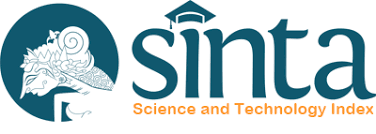BAGAIMANA BADAN PEMERIKSA KEUANGAN (BPK) MELAKUKAN AUDIT TERHADAP BADAN USAHA MILIK DAERAH (BUMD)?
DOI:
https://doi.org/10.30606/hirarki.v3i3.1384Keywords:
BPK, Audit, BUMDAbstract
BPK merupakan salah satu Lembaga tinggi negara yang berfungsi melakukan pengawasan keuangan negara. Sedangkan BUMD merupakan perusahaan milik negara yang modalnya berasal dari kekayaan negara atau daerah yang dipisahkan. Kedua Lembaga tersebut sama-sama berafiliasi kepada negara. Tujuan penelitian ini adalah untuk mengetahui bagaimana BPK melakukan pemeriksaan terhadap BUMD. Walaupun BUMD mendapatkan modal dari negara, akan tetapi BUMD tetap diposisikan sebagai perusahaan. Lembaga yang memiliki kewenangan untuk melakukan audit terhadap BUMD adalah Kantor Akuntan Publik. Akah tetapi, dalam prakteknya, BPK tetap melakukan audit terhadap BUMD. Metodologi yang digunakan dalam penelitian ini adalah metode kualitatif dengan analisa konten. Hasil penelitian ini menunjukkan bahwa BPK belum memiliki aturan yang baku untuk mengaudit BUMD.
Downloads
References
Amdanata, D. D., & Mansor, N. (2016). Perbandingan Penerapan Good Corporate Governance pada BUMD Provinsi Riau dengan BUMD DKI Jakarta (Perbandingan dengan PT. Pembangunan Jaya Ancol). In 1st CELSciTech 2016 (Vol. 1). Pekanbaru, Riau, Indonesia: Universitas Muhammadiyah Riau.
Amdanata, D. D., & Mansor, N. (2020). Performance of Regional Government-Linked Companies in Indonesia: The Influence of State Audit Board and Regulations. Jurnal Pengurusan, 58.
Amdanata, D. D., Yusriadi, Mansor, N., & Nuzilah, N. (2019). Implementasi Asas Transparansi Good Corporate Governance pada BUMD di Indonesia. Inovbiz: Jurnal Inovasi Bisnis, 7, 154–161.
Ariyanto, D., & Jati, A. (2010). Pengaruh independensi, kompetensi, dan sensitivitas etika profesi terhadap produktivitas kerja auditor eksternal. Jurnal Ilmiah Akuntansi Dan Bisnis, 5(2).
Bastian, I. (2001). Akuntansi Sektor Publik Indonesia (1st ed.). Yogyakarta: Pusat Pengembangan Akuntansi, Fakultas Ekonomi Universitas Gadjah Mada.
Colquhoun, P. (2013). Political and Organizational Legitimacy of Public Sector Auditing in New Zealand Local Government. Accounting History, 18(4), 473–489. https://doi.org/10.1177/1032373213505798
Dittenhofer, M. (2001). Performance Auditing in Governments. Managerial Auditing Journal, 16(8), 438–442.
Dwiputrianti, S. (2011a). Effectiveness of Public Sector Audit Reports in Indonesia (Preceding and Following Audit Reform). (Unpublished Phd Thesis). The Australian National University.
Dwiputrianti, S. (2011b). Scope of Auditing on the Quality of Content in the Indonesian External Public Sector Auditing Reports. International Review of Public Administration, 16(3), 133–149. https://doi.org/10.1080/12294659.2011.10805211
Esen, M., Bellibas, M. S., & Gumus, S. (2018). The Evolution of Leadership Research in Higher Education for Two Decades (1995-2014): A Bibliometric and Content Analysis. International Journal of Leadership in Education, 1–15. https://doi.org/10.1080/13603124.2018.1508753
Holida, F., & Suryadi, H. (2012). Pengaruh Good Corporate Governance Terhadap Kinerja Perusahaan. Jurnal Demokrasi & Otonomi Daerah, 10(1), 1–26.
Lee, S.-C., Su, J.-M., Tsai, S.-B., Lu, T.-L., & Dong, W. (2016). A Comprehensive Survey of Government Auditors’ Self-Efficacy and Professional Development for Improving Audit Quality. SpringerPlus, 5(1), 1263. https://doi.org/10.1186/s40064-016-2903-0
Loke, C. H., Ismail, S., & Fatima, A. H. (2016). The Perception of Public Sector Auditors on Performance Audit in Malaysia: an Exploratory study. Asian Review of Accounting, 24(1), 90–104. https://doi.org/http://dx.doi.org/10.1108/13217341311316959
McLeod, R. H., & Harun, H. (2014). Public Sector Accounting Reform at Local Government Level in Indonesia. Financial Accountability and Management, 30(2), 238–258. https://doi.org/10.1111/faam.12035
Ministry of Home Affairs of the Republic of Indonesia. (2014). Regional Government-Linked Companies (Badan Usaha Milik Daerah). Retrieved January 1, 2018, from http://keuda.kemendagri.go.id/datin/index/2/2014
Nhi, V. Van, Minh, M. T. H., Hung, N. X., & Huy, P. Q. (2013). The Value and Benefits of State Audit for State Economic Groups (SEG) and Conglomerates - The Case of Vietnam. Journal of US - China Public Administration, 10(3), 294–302.
Pearson, D. (2014). Significant Reforms in Public Sector Audit – Staying Relevant in Times of Change and Challenge. Journal of Accounting & Organizational Change, 10(1), 150–161. https://doi.org/10.1108/JAOC-06-2013-0054
Prabowo, T. J. W., Leung, P., & Guthrie, J. (2017). Reforms in Public Sector Accounting and Budgeting in Indonesia (2003-2015): Confusions in Implementation. Journal of Public Budgeting, Accounting & Financial Management, 29(1), 104–137.
Probohudono, A. N., Hartanto, R., & Pratama, R. P. (2018). Determinants of Settlement Audit Recommendation of the Audit Board of the Republic of Indonesia. Public Sector Performance Management, 4(2), 169–189. https://doi.org/10.1504/IJPSPM.2018.090736
Radcliffe, V. S. (2008). Public secrecy in auditing: What government auditors cannot know. Critical Perspectives on Accounting, 19(1), 99–126. https://doi.org/10.1016/j.cpa.2006.07.004
Santosa, D. B. (2011). Kebijakan Optimalisasi Peran Badan Usaha Milik Daerah (BUMD) Jawa Timur. Jurnal Aplikasi Manajemen, 9(2), 525–534.
Schwartz, R. (1999). Coping with the Effectiveness Dilemma: Strategies Adopted by State Auditors. International Review of Administrative Sciences, 65(4), 511–526. https://doi.org/10.1177/0020852399654006
Sitasari, N. W. (2022). Mengenal Analisa Konten dan Analisa Tematik Dalam Penelitian Kualitatif. Forum Ilmiah, 19(1), 77–84.
Tang, Q., Chow, C. W., & Lau, A. (1999). Auditing of State-Owned Enterprises in China: Historic Development, Current Practice and Emerging Issues. The International Journal of Accounting, 34(2), 173–187.
Downloads
Published
How to Cite
Issue
Section
License

This work is licensed under a Creative Commons Attribution-NonCommercial 4.0 International License.













